Lockheed L-1049 Super Constellation – United Nations
The Lockheed L-1049 Super Constellation is a long-serving, iconic transport aircraft that continues to play a crucial role in the United Nations' global operations. Despite being an older design, its robust build, reliability, and adaptability ensure it remains a valuable asset in complex humanitarian, peacekeeping, and diplomatic missions worldwide. The aircraft has undergone extensive modernizations to ensure its continued relevance, including advanced avionics, upgraded systems, and enhanced safety features, while still retaining its original piston engines.
Missions & Uses
Humanitarian Aid & Disaster Response
Global Aid Distribution: The L-1049 is regularly deployed to deliver essential supplies—such as food, water, and medical equipment—into disaster zones, conflict areas, and regions with limited infrastructure.
Emergency Medical Evacuations: Its spacious interior can be reconfigured to transport injured civilians or UN personnel, providing rapid medical evacuation in critical situations.
Disaster Relief Coordination: Used to transport response teams and coordinate efforts during large-scale humanitarian crises.
Notable Deployments:
Indian Ocean Tsunami Relief (2025): Delivered critical humanitarian aid to countries affected by the tsunami, helping coordinate relief operations.
Hurricane Jeff (2024): Played a vital role in evacuating personnel and delivering supplies during the aftermath of the storm.
Peacekeeping & Diplomatic Support
UN Peacekeeping Operations: The L-1049 regularly supports UN peacekeepers by delivering troops and supplies to conflict zones, ensuring stability in volatile regions.
Diplomatic Shuttle for UN Officials: Transporting diplomats, officials, and peace negotiators to facilitate discussions and peace treaties in conflict areas.
Notable Deployments:
Middle East Peace Talks (2023): Used to transport diplomats to peace talks in the Middle East, ensuring smooth logistical support for crucial diplomatic missions.
Sudan Peace Initiative (2025): Provided transport and logistical support for peacekeepers and negotiators, contributing to efforts aimed at stabilizing the region.
Military & Reconnaissance Support
Transport of Military Units: Frequently called upon to transport peacekeeping forces, military personnel, and essential supplies to regions in crisis.
Reconnaissance and Surveillance Operations: Assists in intelligence gathering and surveillance, often in areas with limited airfield infrastructure.
Notable Deployments:
Operation Silent Horizon (2024): Delivered vital supplies and personnel to peacekeeping missions in the Middle East.
African Union Operations (2025): Supported peace enforcement missions across Africa, helping stabilize conflict zones.
Aircraft Rescue & Evacuations
Rescue Operations: Vital in performing search-and-rescue missions, evacuating stranded civilians, and providing airlift capabilities when other aircraft are unavailable.
Aerial Command for Rescue Missions: Coordinates rescue teams and directs operations from the air, ensuring the success of emergency response efforts.
Notable Rescues:
Gulf of Aden Rescue (2023): Played a key role in locating stranded fishermen and guiding rescue teams to their location.
Arctic Emergency Evacuation (2024): Assisted in rescuing personnel stranded in the Arctic due to severe weather, providing a lifeline in remote areas.
Why the Lockheed L-1049 Super Constellation is Still in Use
Despite being an older aircraft, the Lockheed L-1049 Super Constellation remains in service with the United Nations due to several key reasons:
Proven Reliability: The L-1049 has a long track record of dependable performance, particularly in challenging and high-risk environments. Its durability and ability to operate under various conditions make it a trusted workhorse for the UN.
Versatility: The aircraft’s spacious interior and adaptable design allow it to be used for a wide range of missions—from transporting humanitarian aid and personnel to performing reconnaissance and providing medical evacuation. Its ability to be reconfigured for various tasks makes it an invaluable tool for the UN.
Limited Infrastructure in Crisis Zones: Many conflict zones and disaster areas lack the infrastructure for modern aircraft, making the L-1049’s ability to operate from smaller, less-equipped airfields a crucial advantage.
Cost-Effectiveness: As the UN continues to face budgetary constraints, maintaining and operating a fleet of L-1049s is more cost-effective compared to procuring new, state-of-the-art aircraft. The ongoing support and upgrades to the aircraft ensure it remains a viable option for the UN's mission requirements.
Modernization Efforts
The Lockheed L-1049 Super Constellation has undergone extensive modernization to ensure its continued viability and effectiveness:
Avionics Overhaul: The aircraft’s aging avionics were replaced with state-of-the-art systems, including digital navigation, communication, and radar systems, enhancing operational efficiency and safety.
Enhanced Safety Features: The aircraft has been retrofitted with modern safety equipment, including improved cockpit instrumentation, fire suppression systems, and reinforced structures to meet current safety standards.
Fuel Efficiency: While the aircraft still uses its original piston engines, it has been fitted with advanced fuel management systems and efficiency upgrades to maximize range and reduce fuel consumption.
Extended Operational Life: Ongoing structural reinforcements have extended the operational lifespan of the L-1049, ensuring it remains a reliable asset for decades to come.
Design & Technical Features
Long-Range Capability: Despite its age, the L-1049’s powerful piston engines provide excellent range, making it suitable for global operations and long-distance missions.
Spacious Cargo Hold: The large cargo hold allows for efficient transport of supplies, equipment, and personnel in a single flight.
Adaptability: The aircraft’s interior can be easily configured for various mission types, including medical evacuations, troop transport, or humanitarian aid.
Advanced Weather Systems: Equipped with modern weather radar and navigation systems, the L-1049 can operate in adverse conditions, ensuring the safety and efficiency of operations.
Notable Deployments & Future Applications
2025 – Southeast Asia Relief Operations: The L-1049 will continue to support UN missions in Southeast Asia, delivering humanitarian aid and providing transport to peacekeeping forces.
2024 – Global Humanitarian Response: The aircraft remains integral to the UN’s emergency response teams, ensuring aid can be delivered swiftly and efficiently to affected regions.
With its remarkable reliability, versatility, and cost-effectiveness, along with significant modern upgrades, the Lockheed L-1049 Super Constellation remains a critical asset in the United Nations' global operations, helping to ensure the success of humanitarian, peacekeeping, and diplomatic missions across the world.
Thanks to CHATGPT
Specifications
General Characteristics
- Predecessor Lockheed L-1049 Super Constellation / Super Connie |(Wings Iron Aviation Academy)
- Created On Android
- Wingspan 184.4ft (56.2m)
- Length 179.0ft (54.6m)
- Height 38.7ft (11.8m)
- Empty Weight N/A
- Loaded Weight 33,962lbs (15,404kg)
Performance
- Horse Power/Weight Ratio 0.353
- Wing Loading 8.1lbs/ft2 (39.7kg/m2)
- Wing Area 4,181.3ft2 (388.5m2)
- Drag Points 9891
Parts
- Number of Parts 83
- Control Surfaces 7
- Performance Cost 544

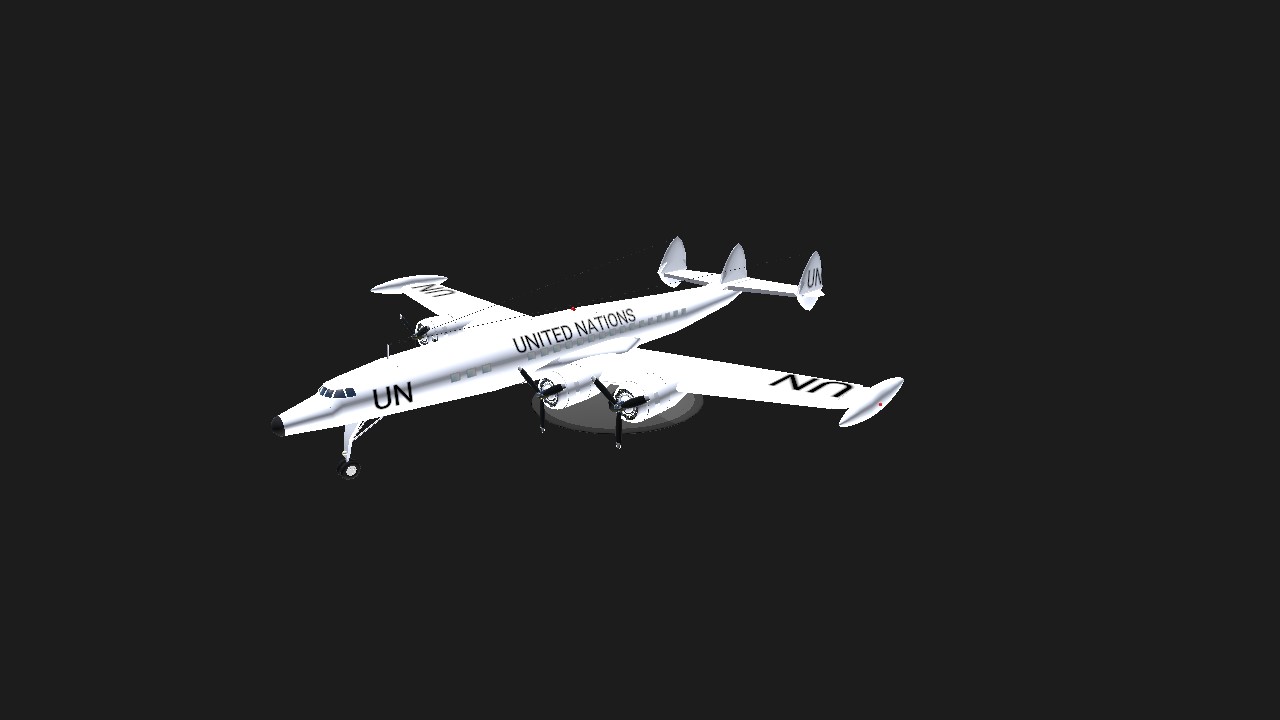
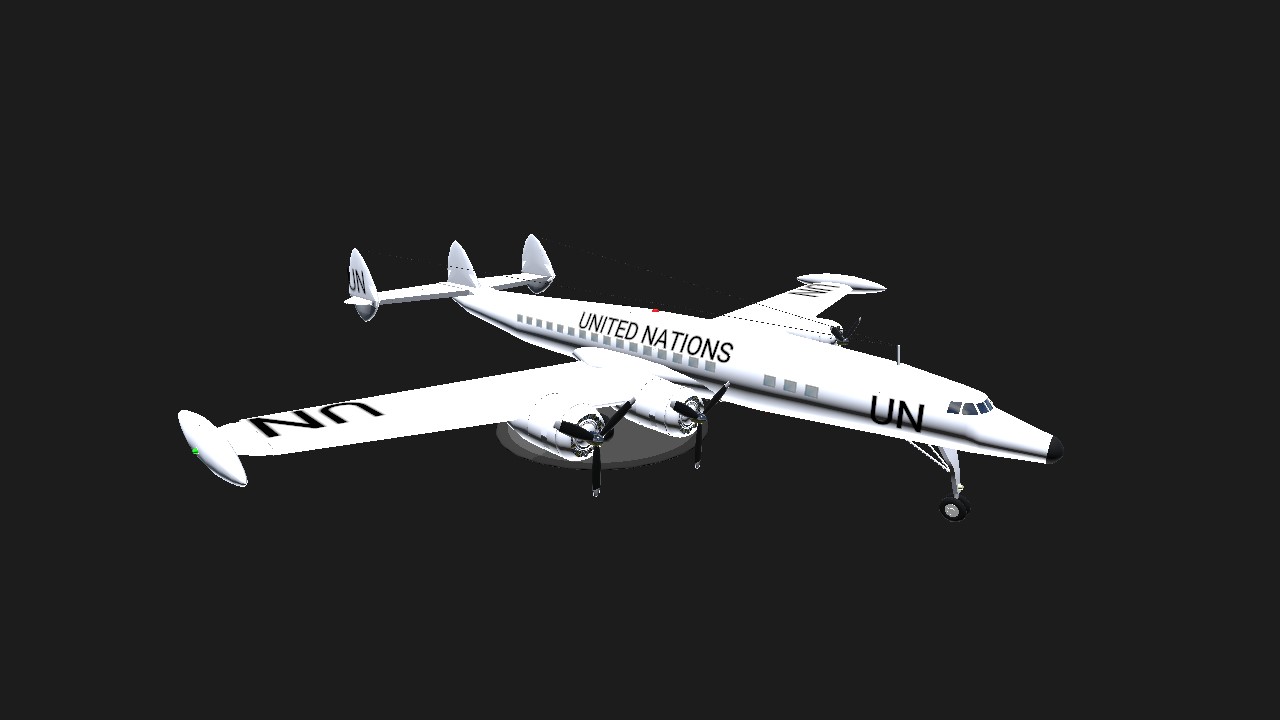
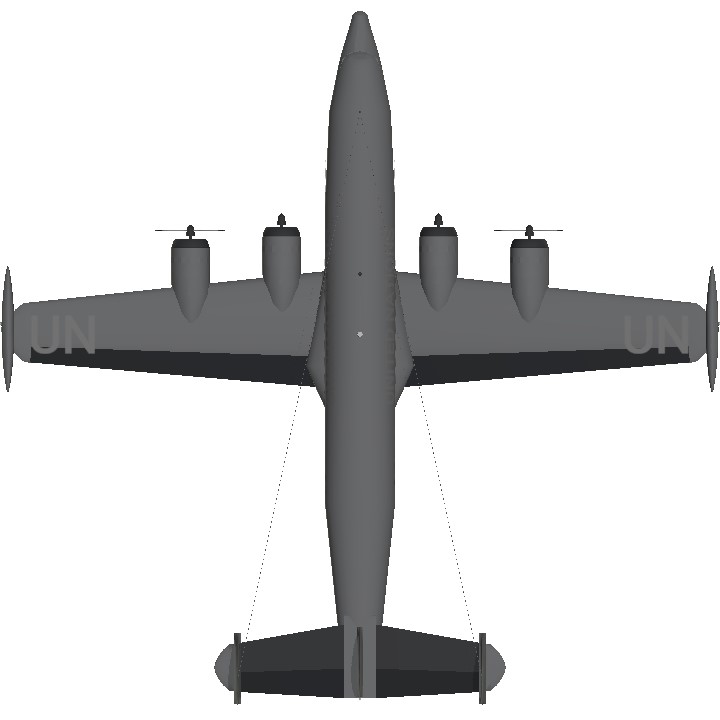
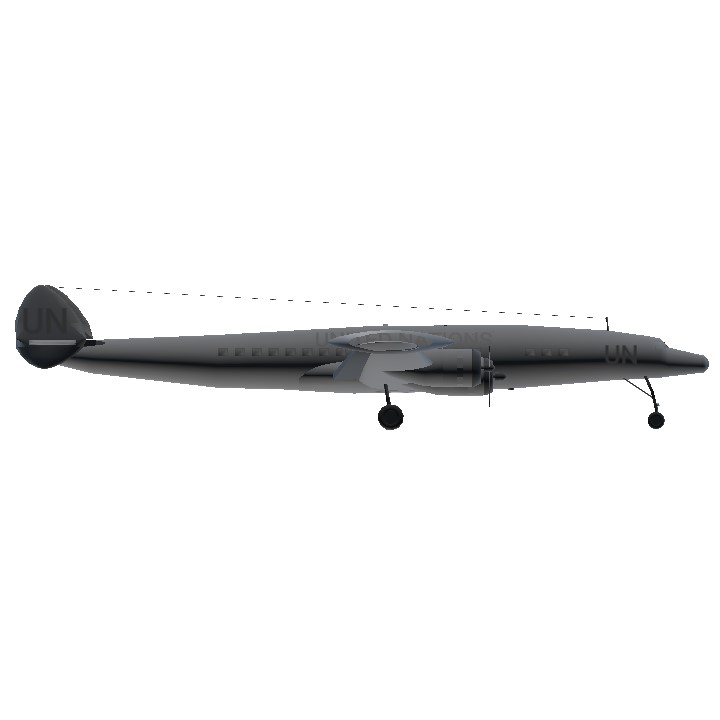
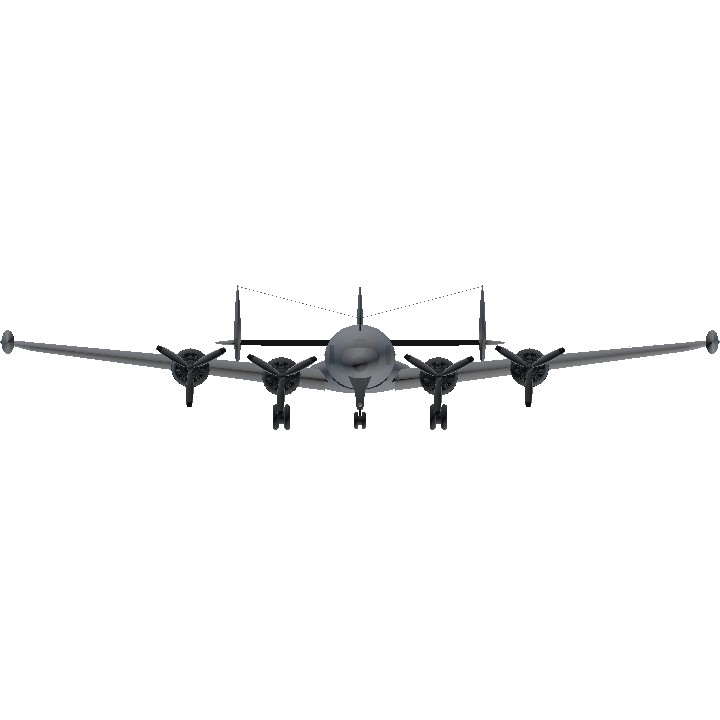
Thanks to @MAPA